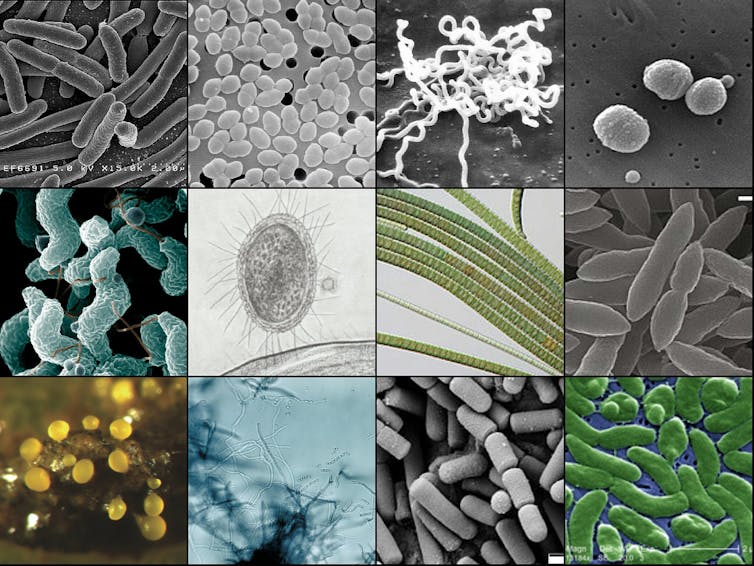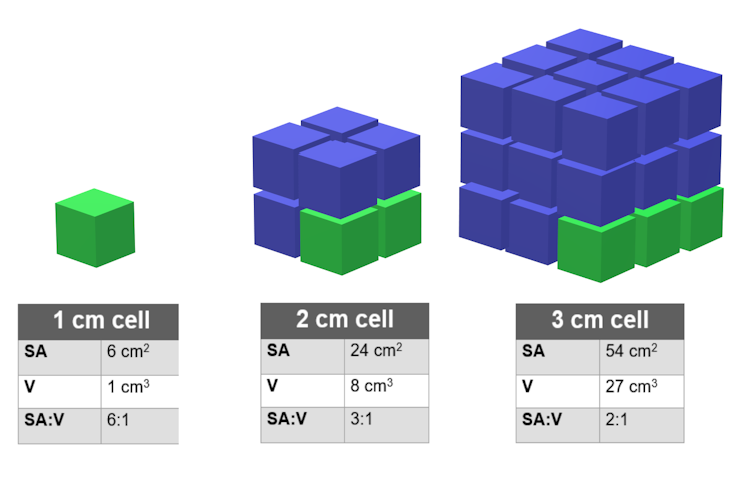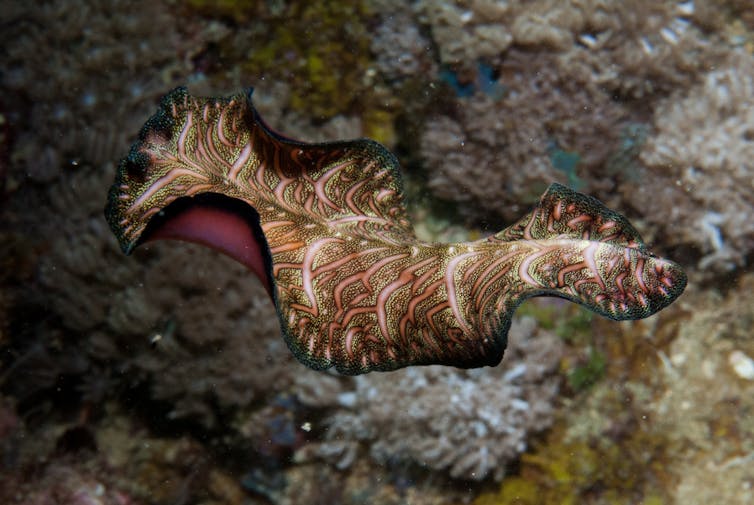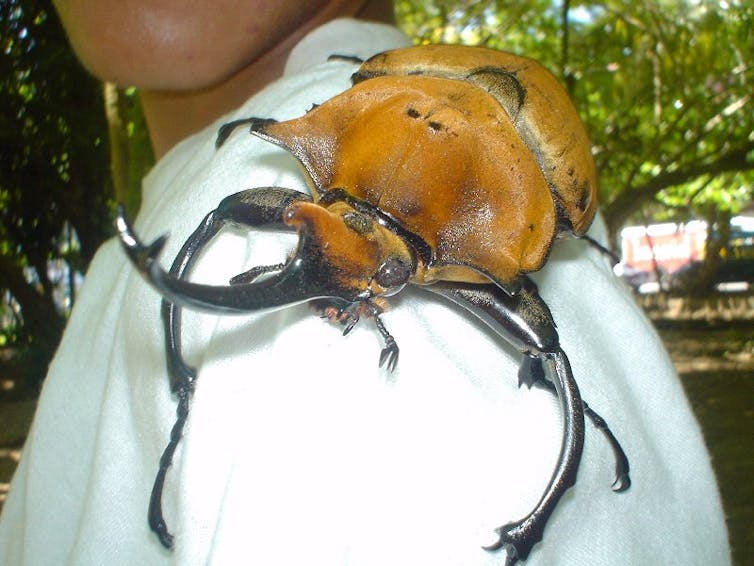ARTICLE AD
Small really does seem to be beautiful in evolutionary terms.
The largest dinosaurs, pterosaurs and mammals may look impressive but these giants are vastly outnumbered by microscopic bacteria and single-celled algae and fungi. Small organisms are also ancient and incredibly resilient.
The first evidence of single-cell organisms dates from around 3.8 billion years ago, soon after the newly formed Earth had cooled enough for organic life to emerge. Multicellular animals evolved less than a billion years ago, with bigger and more complex animals appearing a little over half a billion years ago.
For most of Earth's history, the planet has been dominated by organisms no larger than the diameter of a single human hair.
 Bacteria collage. (Wikimedia Commons)
Bacteria collage. (Wikimedia Commons)Large animals tend to take longer to grow and reach maturity, so they reproduce more slowly. While mice have a short generation time (how long it takes a newborn to grow up and give birth) of about 12 weeks, elephants take closer to 25 years.
Large species tend to evolve more slowly and may be less able to cope with longer-term changes in the physical and biological environment. Larger organisms also tend to fare worse at mass extinction events.
Nothing much bigger than a domestic cat survived the asteroid impact that wiped out the dinosaurs 66 million years ago.
Being very big requires much more specialisation and slower reproduction, and both reduce the chances of surviving environmental upheavals. For example, larger vertebrates need disproportionately thicker bones and larger muscles. A shrew the size of an elephant would quickly break its legs if it tried to walk.
So it's not surprising that many groups of animals appear to originate at relatively small sizes, and the earliest branching representatives are typically quite tiny.
The sister groups to the winged insects include the minute springtails (mostly less than 6mm), while the microscopic tardigrades or "water bears" are the sister group of the arthropods (which include spiders and crustaceans) and velvet worms.
The earliest mammals and some of the earliest dinosaurs (such as Eoraptor at less than two metres long) were also relatively small compared to their later, often gigantic cousins.
Why bother getting bigger at all?
There are many advantages to being bigger. Larger size may make it easier to evade predators (elephants and whales have few enemies other than humans), hunt prey, outcompete rivals and endure temporary hardships.
Larger organisms also tend to be better at conserving heat (because of their relatively smaller surface area) and greater potential for intelligence.
 Unit cell for surface area (SA) to volume (V) ratio with tables. (Wikimedia Commons)
Unit cell for surface area (SA) to volume (V) ratio with tables. (Wikimedia Commons)But scientists believe there is an upper limit on cell size. The mechanics of cell division break down at very small and very large sizes. All living things must also contend with a universal physical constraint noted by Galileo Galilei. Bigger cells tend to have less surface area per unit of volume.
This means that the natural movement (diffusion) of molecules of gases, nutrients and wastes in and out of the cell isn't enough to keep things running without a transport system. These molecules also have further to travel in larger cells.
So building a bigger organism involves two things. First, grouping lots of cells so they can work together. Second, making different cells specialised for different jobs – including structural support, digesting food and moving things such as oxygen and CO₂ around.
The alternative is to become flat or threadlike (like horsehair worms) or thin and flat (such as flatworms). These animals don't need an internal transport system because none of their cells (or their contents) are far from the surrounding air or water.
 The Persian carpet flatworm. (Wikimedia Commons)
The Persian carpet flatworm. (Wikimedia Commons)The palaeontologist Edward Cope (1840-1897) proposed that individuals within all lineages tend to increase in size through evolutionary time. While this is true in a statistical sense, there are many exceptions, and mass extinction events often reset things to the smaller end of the spectrum.
Plot the size distribution for nearly any major group of animals and you will find a strikingly positive skew: most species are much closer to the smallest size than the largest size within their parent group, and there are relatively few big species.
For example, there are more species of insects (around 5 million) than all other groups of animals put together, making them arguably the most successful animal group on Earth.
Most insects are beetles, with a mean body length in the region of 6mm. Giants such as the Hercules (17cm long) and elephant (13cm long) beetles are extremely rare.
Small size allows animals to live in a greater diversity of niches, and to partition resources more finely, packing more species and individuals into the same habitat space. Insects are masters of this strategy.
 The elephant beetle is found in Central America. (Wikimedia Commons)
The elephant beetle is found in Central America. (Wikimedia Commons)The meek will inherit the Earth - and beyond
Despite the tendency of organisms to evolve to larger sizes, the simplest and smallest organisms still have many incredible abilities that larger organisms lack.
Many of these diminutive "extremophiles" can survive environments that wipe out most other forms of life.
Some archaea (single-cell organisms without nuclei) can withstand temperatures over 200°C around deep-sea vents, while other species can thrive in waters of high salt, acid and alkaline concentration.
Similarly, the tiny animals tardigrades can withstand temperatures between 150°C and -200°C, the vacuum of space, drying out for decades, and doses of radiation 1,000 times those needed to kill a human.
There are even tiny nematode worms able to live under two miles of solid rock.
Some scientists think that microbes could survive interplanetary journeys inside meteorites. Scientists also think any life we find elsewhere in the Solar System might have a common origin with life on Earth - starting out small.![]()
Matthew Wills, Professor of Evolutionary Palaeobiology at the Milner Centre for Evolution, University of Bath and Tim Rock, PhD Candidate in Biology, University of Bath
This article is republished from The Conversation under a Creative Commons license. Read the original article.

 6 months ago
46
6 months ago
46 

